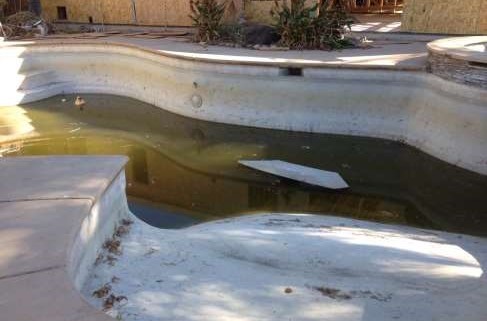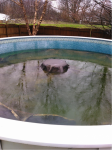Mudslides and What They Do To Pools
How Mudslides affect Pools
In December we had fire and rain. This is not a good combination. There were many neighborhoods that had mandatory evacuations, 1st for the fires and then because of the fear of mudslides and floods. Unfortunately when the rain stopped there was mud going down the middle of the street and into the neighborhood houses and pools. We, of course as of today, are not out of the woods yet. We find ourselves once again with this problem.
I thought I would give some useful information about mudslides and their impact on landscapings when they get into them.
RAIN FLOODING AND LANDSLIDES
After a fire, the hillsides are left open and pools can be filled up with mud. Landslides are a big problem in fire-damaged areas. I’ve seen many pools fill up with mud. Then the mud dries out and is removed. The scraping against the pool walls from the shovels that are removing the mud damages the plaster.
Sometimes if the pool fills with mud and is on a hillside, the pool itself can go down the hillside. A pool filled with mud and dirt is heavier than a pool filled with water.
THREE DEGREES OF MUDSLIDE PROBLEMS
Mud in landscapings is divided into three basic categories depending on how much mud is in the pool.
- The lightest case is when the rainwater picks up some dirt on its way into the landscaping. There is no real mud in this best-case scenario. What you see is water that is brown and looks like coffee instead of crystal clear water. This situation is not as costly or as dangerous as some people what us to believe. The pool will need to be swept a few times, causing the filters to be cleaned a few times. Chemicals are added designed to react with the coffee looking water.
- The next heavier mud case is when there is a trail or trails of dirt going into the pool. In this situation there may be too much dirt to clean out of the pool with just the pool sweep. The filter system will get overloaded with dirt. The handling is to drain the pool. Clean out the dirt by shoveling it out of the pool and also sweeping the pool.
- The third case is where a lot of mud has already gone into the pool. The standard cleaning actions just will not work. In this case the dirt is vacuumed and pumped not into the street gutter or sewer drain. Then the pool can be swept and cleaned and refilled with water. Once refilled the water is treated and the pool is swept as many times as necessary.
There are variations of each, and the handling may be a combination of the above. Unless the pool was left empty for a long time and the sun had a chance to dry out the plaster, a plaster job is not a normal repair for pools.




Leave a Reply
Want to join the discussion?Feel free to contribute!